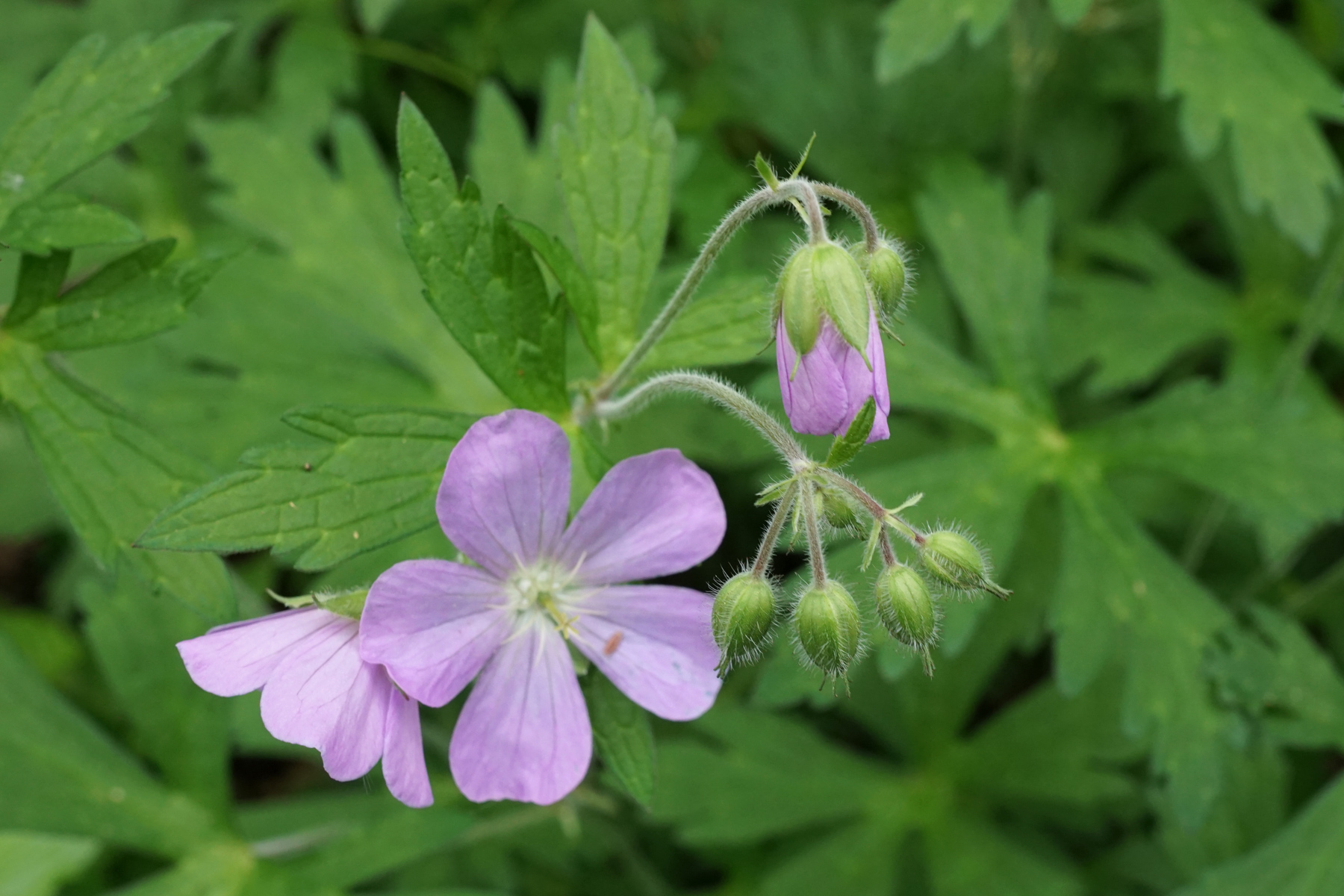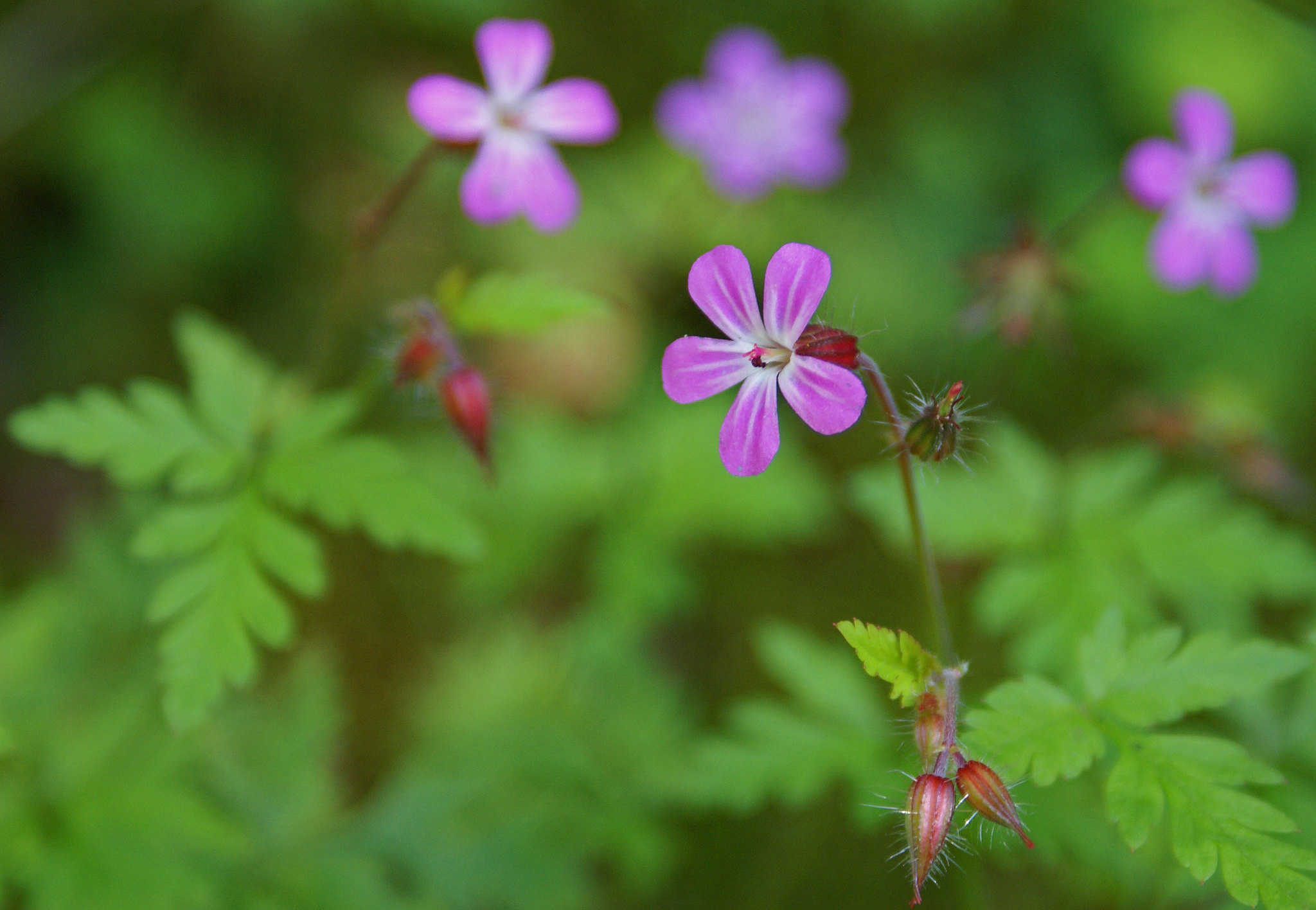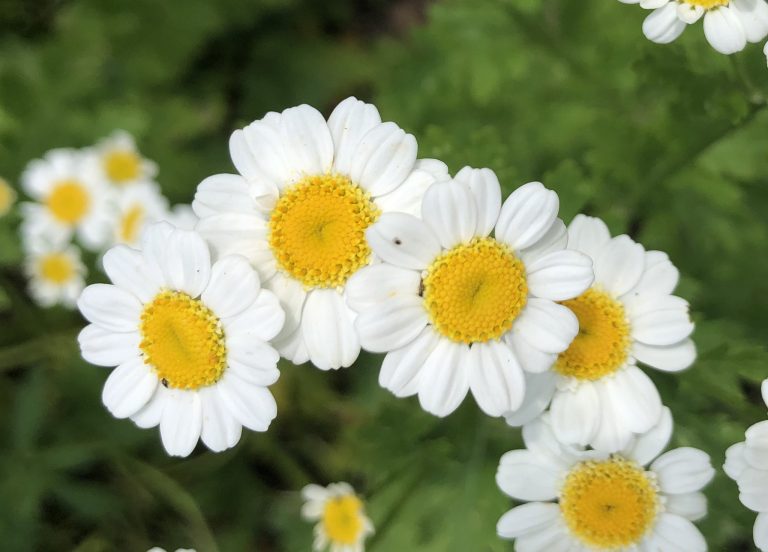Geraniums are among the long list of baffling botanical nomenclature. While the beautiful showy flowers that are purchased each summer to dress up the garden (and may or may not be brought in over the winter) are widely known as geraniums; they are, botanically speaking, actually Pelargoniums.
This genus does fall within the Geraniaceae family, but true geraniums belong to the genus Geranium. Since both genera possess similar medicinal qualities, we will be looking at both our native wild geranium (Geranium maculatum) and the popular African native ”geranium” (Pelargonium spp.) together.

Geranium plants
Both pelargoniums and geraniums are perennial in their native habitat. These herbaceous flowering plants are known as “subshrubs,” since they are mostly herbaceous with a slightly woody base. Most species have lobed leaves, and bear clusters of flowers naturally ranging from pure white to deep red, with some lighter shades of purple.
Pelargoniums are cultivated mainly for ornamental purposes today, although in Africa, they served as traditional medicine for several indigenous tribes. True geraniums can be found growing wild in temperate climates, and are also cultivated as native perennials.
The source of the most medicinal properties with these plants is the root. For pelargonium, this consists of a fibrous tuber, while true geraniums have shallow rhizomes.
Traditional uses of geranium
Success
You are now signed up for our newsletter
Success
Check your email to complete sign up
Like many medicinal plants, geraniums have been used to treat a variety of conditions. African tribes like the Basotho, Fingos and Zulus used pelargonium root primarily for gastrointestinal issues. After the plant was introduced to Europe, it came to be used for respiratory ailments — including bronchitis, the common cold, pneumonia, sinusitis, and sore throat.
Our native geranium “cranesbill” was used by native American tribes to treat diarrhea, dysentery, inflammation, sore throat, hemorrhages, and even eye conditions like conjunctivitis and retina irritations.
European settlers found it useful for cholera, diarrhea, internal bleeding, and STDs, as their native geranium “Herb Robert” was used in folk remedies for similar applications.

Medicinal properties of geranium
Modern science has discovered many compounds in geraniums that could contribute to their purported medicinal effects. The roots of both plants contain tannins, which are known to soothe the digestive tract.
Both exhibit antiseptic, anti-inflammatory, and antibacterial properties as well, possibly due to the presence of coumarins and hydroxycinnamic acids.
Some studies suggest that an antimicrobial effect is due to the way bioactive phytochemicals in geranium interfere with microbial binding to host cell receptors, rendering them ineffective.
Growing geranium
Pelargonium
Unless you are completely new to gardening, you are probably familiar with pelargoniums. These showy bloomers are easy to grow indoors and out, although they will not survive freezing temperatures.
Plant pelargoniums outdoors after all danger of frost, or keep them in a pot that can be taken in and out. They prefer fertile, well-drained soil in full sun, and can tolerate dry better than wet conditions. These plants are easily propagated from cuttings, but can also be started from seed.

True geraniums
Our native geraniums are more shade tolerant, and also prefer damp to dry conditions. Otherwise, this fragrant, flowering, ground cover is just as easy to grow. It spreads willingly — but not aggressively — via its medicinal rhizomes.
Home remedies
Today, the root, leaves and flowers of both plants are recognized for their medicinal properties.
If you are growing cranesbill, the herb can be used fresh or dried for infusions, tinctures and salves. Choose young, healthy leaves and flowers, and harvest early in the day when the essential oils will be most potent.
For wild geranium infusion, steep one to two tablespoons of fresh herb in a cup of boiled water for up to 10 minutes.
Rhizomes are best collected in the fall, after the leaves have died back somewhat. They can be used directly, or dried and stored in paper bags. Pulverized, the dried roots can be used in compresses, washes and internal applications. WARNING: excess consumption can cause liver toxicity due to the large amount of tannins in the root.
If you are growing pelargonium, stick with the leaves and flowers for your medicinal remedies — unless you are willing to sacrifice your plant come winter time. If that is the case, then you can clean and dry the root for various preparations.
Infusions can vary in strength and steeping time depending on the application.
Tinctures are made by infusing an herb in alcohol to extract its medicinal compounds. If using fresh material, fill a bottle ⅔ full with loose, chopped leaves. Fill the rest of the bottle with strong alcohol like whisky or brandy. Make sure the plant material is completely submerged, and cover tightly. Place the jar out of direct sunlight and shake every few days. After about one month, use a funnel to strain off the tincture into an amber bottle with a dropper.
For an alternative, non-alcoholic glycerite recipe, visit our (E) Echinacea article.
Applications for geranium remedies
Geranium can help support the liver and promote detoxification — from chemotherapy, cytosis, alcoholism, or environmental toxins. One cup of tea made with the leaves should be steeped until cool, and then sipped very gradually throughout the day. One sip per hour is recommended.
For digestive issues, one cup of tea brewed until cool can be divided into three doses — one before lunch, one before dinner and one before bed. To relieve diarrhea, a quarter tsp of tincture or glycerite made from both leaves and flowers is recommended.
For minor respiratory ailments, a cooled infusion can be used as a mouthwash, gargle, and/or nasal spray. For more serious conditions like bronchitis, one teaspoon of tincture can be taken three times a day with herbal mint tea, and also rubbed on the chest and back for the night.
Geranium tincture is also said to help with thyroid problems. One teaspoon 30 minutes before each meal is recommended.
Geranium root is recommended for skin conditions. A strong infusion of three Tbsp dried or six Tbsp fresh root in a quart of boiling water should be steeped two hours before adding to bath water. Two weeks of daily baths should help clear up many dermatological problems.













